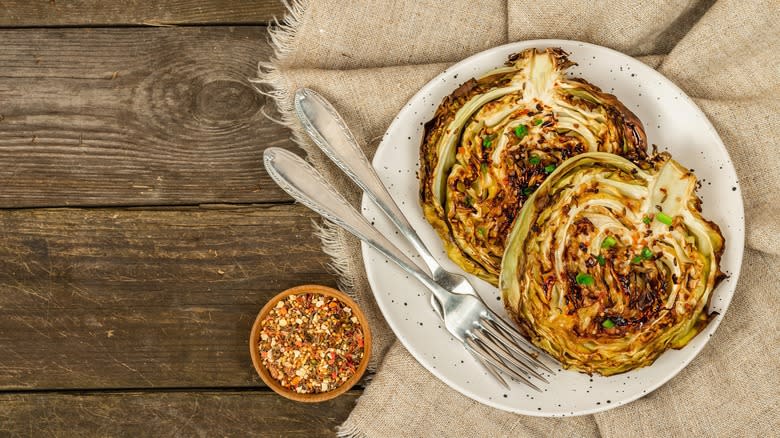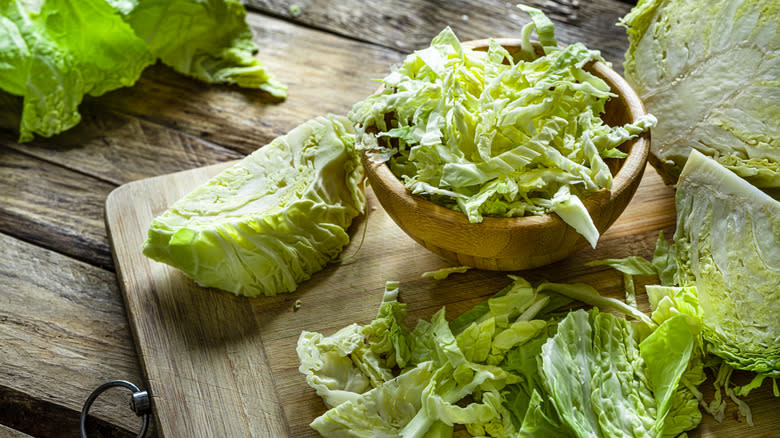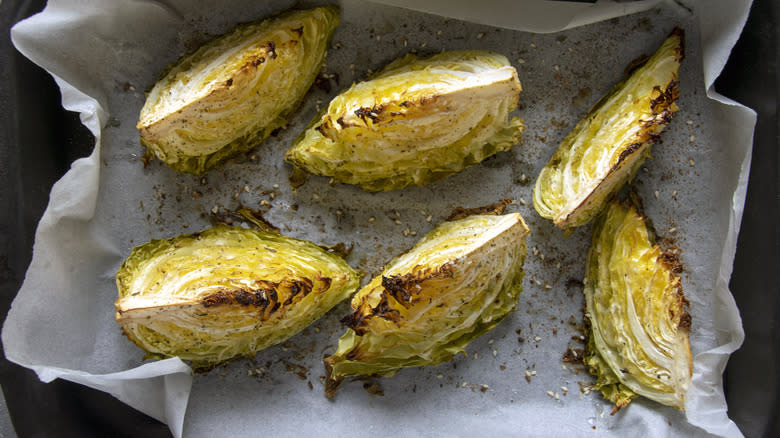A Chef Told Us The Biggest Mistake To Avoid For Roasted Cabbage

We may receive a commission on purchases made from links.
Cabbage is a versatile ingredient that can be served as part of a side dish or on its own as the main event. For instance, cabbage steaks are a great vegetarian alternative to beef thanks to the vegetable's heartiness. Cabbage can be roasted to develop a rich, caramelly flavor (one that's often accentuated by spices like garlic or cumin). Still, home chefs who are new to roasting cabbage will want to learn how to avoid certain mistakes. Remy Park, a vegan recipe developer and author of "Sesame, Soy, Spice" discussed a common misstep many people make when roasting this cruciferous vegetable.
As elucidated by Park, "Usually the biggest mistake people will make when roasting cabbage is undercooking it!" While the details can vary from recipe to recipe, roasting cabbage in the oven can involve temperatures as high as 450 degrees Fahrenheit. According to Park, high heat plays well with cabbage, as the vegetable "can handle a lot of heat." Elevated temperatures are key to achieving the perfect texture, which is just as important as flavor when preparing cabbage.
Read more: 12 Vegetables And Fruits That Used To Look Very Different
Tender And Toothsome Cabbage Is The Way To Go When Roasting

When it comes to roasting cabbage, vegan cookbook author Remy Park explained that "ideally you want the cabbage to be nice and tender throughout," and undercooking the vegetable can lead to a texture that's "raw and crunchy." A crisp texture might be preferred when making a crunchy quinoa and cabbage salad, but it's not as inviting when it comes to hot preparations, such as roasting.
Roasted cabbage will provide a few visual cues when it's achieved the desired texture. As the vegetable cooks, the leaves will become lightly wilted and will be tinged with brown. This browning effect is caused by the Maillard reaction, which is what gives food its rich, caramelly flavors when exposed to heat. The Maillard reaction can also bring out the inherent sweetness of foods, including vegetables like cabbage (which isn't normally associated with sweet flavors). Consider that the mild peppery bite of raw cabbage is tempered by the roasting process to create a subtler flavor profile.
Best Cooking Techniques For Cabbage

To roast cabbage to perfection, Remy Park suggests two effective methods. "You can always finish off a cabbage dish in the oven, or return to heat to continue to cook it down," explained the cookbook author, as both techniques are effective at generating the high temperatures necessary to suitably roast cabbage. In addition to these conventional cooking methods, air frying cabbage also creates a tender texture.
No matter which cooking technique you use, combining cabbage with oil will help your seasoning stick to the leaves, while also ensuring even doneness. Be sure to select an oil with a high smoke point, which can handle high temperatures without singeing (and infusing your roasted cabbage with unwanted burnt flavors). When it comes to smoke points, avocado, peanut, and sunflower oils are all excellent options for cooking at high temperatures. Thanks to Park's sage advice, roasted cabbage can become a staple recipe in your home cooking arsenal.
Read the original article on Daily Meal

